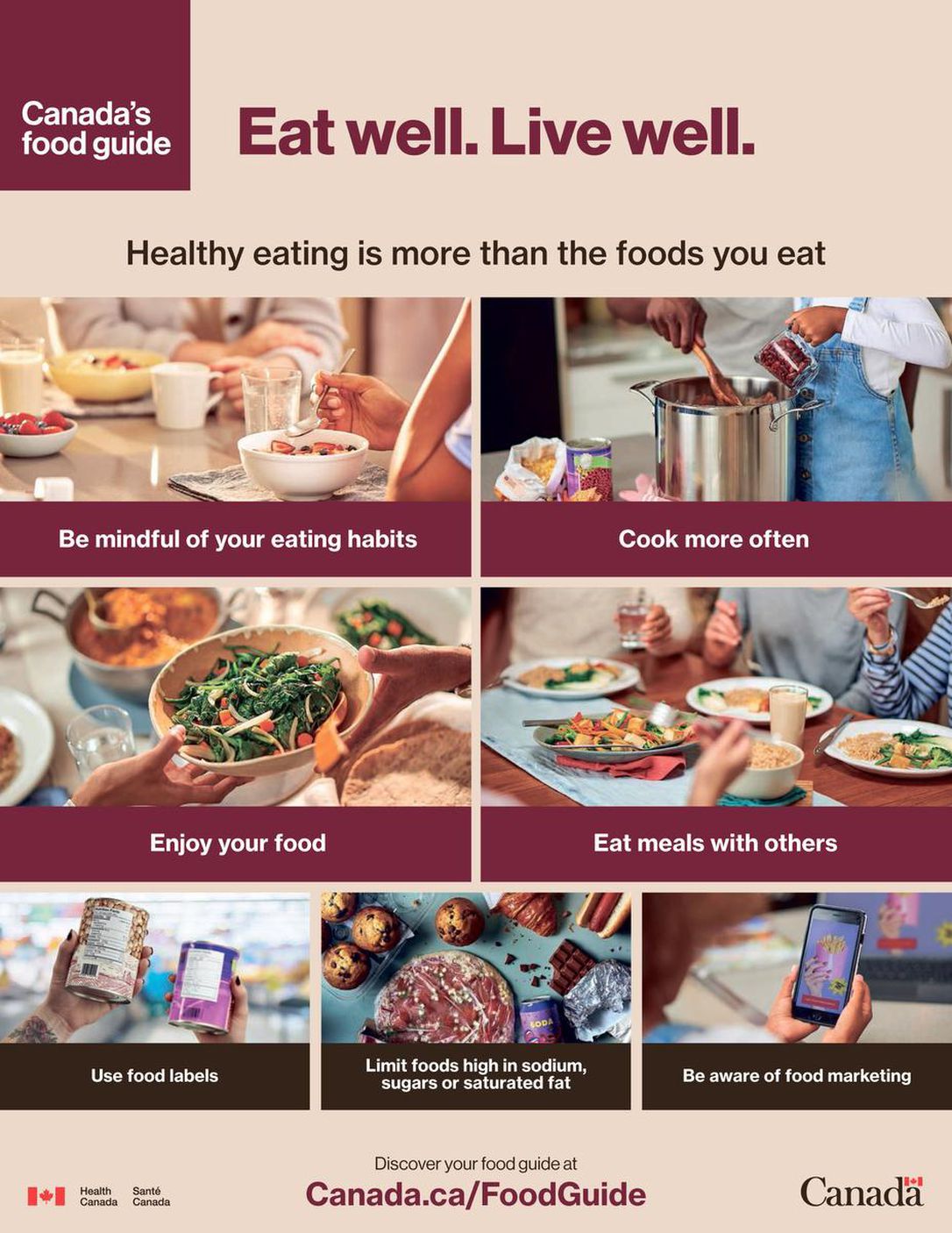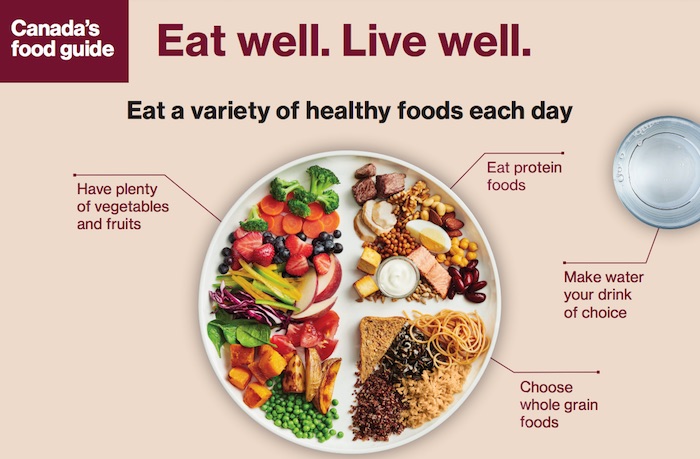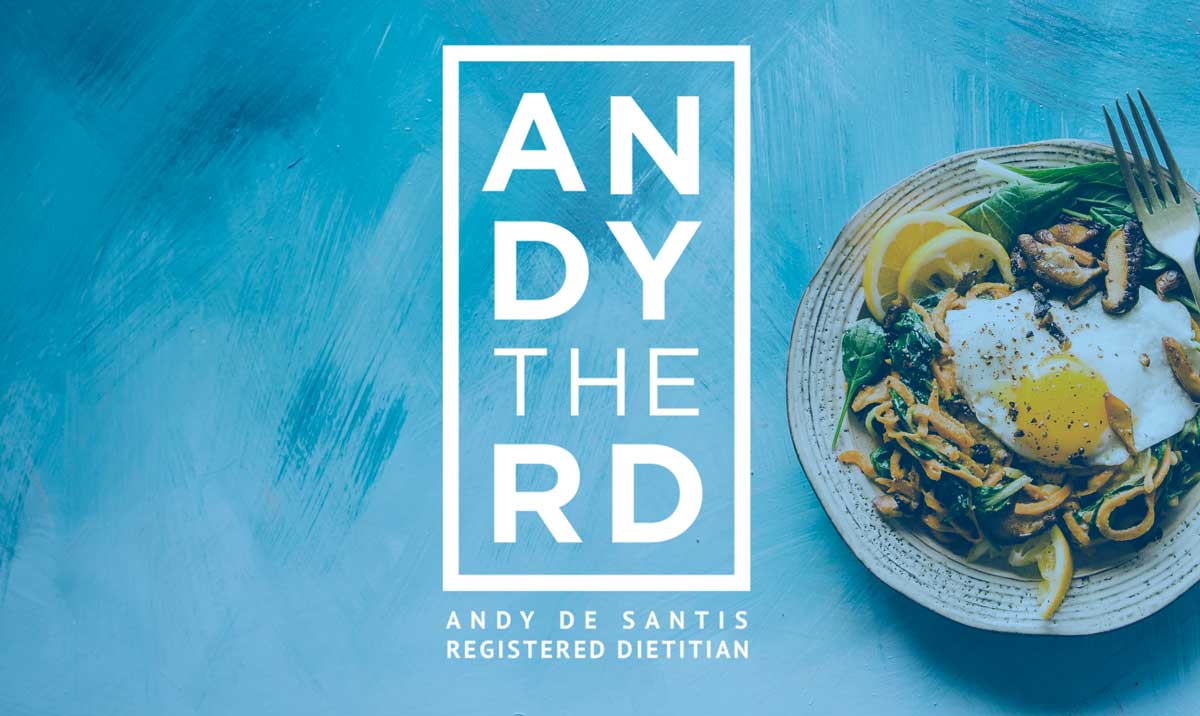Canada’s new brand new food guide is fresh off the presses and it’s time for me to have my say.
One of the biggest criticisms of Canada’s previous food guide was probably in relation to the amount of information it contained relative to the lack of practical, applicable guidance of how to put it all together.
The most recent food guide is, quite literally, a complete 360 in this regard.
It contains very little text, very little instruction but for sharing the concept of a balanced, healthy plate, and providing some brief guidance on the reverse regarding the importance of mindful eating, cooking at home and the social component of food.
Those are all very important points and in fact this intuitive angle and the notion of appreciating food beyond just nutrients is important and certainly a reasonable approach to take to accommodate the current climate around food relationships as well as the endlessly diverse Canadian population.
When I think about my clients I feel like so many are overwhelmed by information that the more concisely, confidently and directly something related to nutrition is presented, the better it is.
I certainly get that vibe from the latest guide and that’s great, but I also have a number of reservations regarding important topics in public health nutrition that I believe could have been better addressed.
Before I go any further let me also say this though…
I am not against this or any previous version of the food guide ( even if limitations have always been present) and I also understand a part 2 will also be released so my apologies if any of my claims may turn out to be incomplete or premature, but I did want to get this content out in a timely fashion.
Health Canada, you have my love and support, making a food guide for 30 million wonderfully unique individuals is NOT easy.
But hey, I’m bloggers gotta do what bloggers gotta do!
Today’s article will share what I like about the new guide, assess whether or not some of my desired changes were actually made, and air grievances in hyperbolic fashion regarding it’s shortcomings.
Let’s get started shall we!
What I Like:
1. The Combination Of Simplicity, Directness & Gentleness: My biggest qualm about this food guide ( as you will understand in the next section) is probably also it’s greatest strength, in that it kind of provides very little information. I like that it’s clean, simple and to the point. It’s far from overwhelming and it makes it pretty clear the components and relative proportions which Health Canada deems to represent a nutritionally balanced meal, while supporting that directness with very gentle messaging on the back, which I fully support as well and are obviously so important at a time with so much drama and negativity surrounding dietary guidance.
2. All Aboard The Whole Grain Train: Ketophiles won’t be pleased but I am happy to see that Health Canada listened to me on this one by having the food guide essentially suggest whole grains exclusively. Whole grains ( such as brown rice, whole grain bread, quinoa etc) are higher in vitamins, minerals, fibre, anti-oxidants and generally lower in glycemic index. Non-whole grains can obviously fit, but I like the idea that our national food guide pushes the gold standard as the primary choice.
3. More Plant-based, Kind Of?: The guide is more plant-based, kind of. Obviously plant-based protein options are visible in the protein section of the plate, and the reverse does appear to show a number of plant-based protein options at work, which is cool. The omission of milk obviously stands out, but I do think having a cup of milk beside the plate with text like “ having a glass of milk or milk alternative is an easy way to make sure you get enough calcium” would have been an acceptable touch to de-emphasize milk without completely removing it. None the less, I give Health Canada big props for having the balls to release a nearly-dairyless guide. It’s almost like the kid in the school yard who did something they were dared to do, but no one thought they ever would. Even though I’m not a dairy consumer myself, it’s hard to deny that fortified milk or milk alternatives can help fill dietary calcium and vitamin D gaps in some people. I do like how they exclusively and almost subliminally try to represent dairy through yogurt, which has functional benefits ( ie: probiotics) and can also be very high in protein ( ie: greek varieties) making it an exceptionally satiating and useful snack food, especially when combined with fruit/nuts/seeds.
4. Fruits & Veggies Remain Prominent: Enough said to be honest. The guide makes it clear that, proportion wise, fruits and veggies should be the most representative portion of a healthy eating pattern, and I don’t disagree. Perhaps a small message like “ it doesn’t have to be organic to be healthy” or “frozen fruit is just as good” or some other encouraging message would be supportive of the economic reality that many Canadian’s face when it comes to affording fresh produce.
Good, But Not Perfect:

Main Messages On Reverse: I fully support the primary message on the back that healthy food is more than what you eat and the supportive guidance that follows ( including cooking at home more, being mindful and so on).
I love the directness and positive energy that focuses on what you SHOULD do.
For me though, I don’t like how we end on three negative or avoidance type messages.
I would have preferred to keep the positive vibe going and use those final 3 squares to deliver gentle but actionable and important public health nutrition messages that keep in mind some common nutrients of concern in the Canadian population.
Examples include:
1. Choose fish more often than red meat
2. Have legumes at least once a week
3. Nuts and fruit make a great snack
In my mind these messages keep the theme of brevity and positivity and are FAR more valuable then “read the food label” or “beware of marketing”.
My Issues
1. It’s Kind Of a Meal Guide Not A Food Guide: Now forgive me Health Canada if you rectify this later but all I can say for now is WHERE MY SNACKS AT?! I must have missed the systematic review and meta-analysis that showed Canadian’s don’t eat snacks anymore and we only eat balanced meals on plates. In my mind, critically healthy foods such as nuts/seeds and fruit, despite fitting into many recipes, are probably more effectively promoted as snacks. Especially at a time where consumers are inundated with granola and protein bars and have no idea what qualifies as the “healthy snack” they so desire.
2. All “Protein Choices” Aren’t Made Equal: This is a major discussion I have with all of my clients and that is to say, perhaps more than any other food group, it is so critically important to diversify your protein intake.
I told Health Canada this in my previous blog ( who am I kidding no one from there reads my work) and they just did not listen!
This specific message is blatantly lacking, although it could be easily rectified in one of two ways:
A. By following my previous suggestion of adding gentle guidance to encourage the favouritism of fish, legumes and nuts/seeds.
B. By halving the protein section into a 3/4 and 1/4 scheme with the foods strongly associated with strong health outcomes in the 3/4 component ( nuts,seeds, fish, legumes) and the others (chicken, red meat, eggs) in the 1/4 component.
Incidentally either or both of these changes would also much more strongly support Health Canada’s alleged goal of encouraging a more vegetarian-based lifestyle in our country.
Here’s why I believe this to be important:
1. Fish and legumes in particular are associated with good health outcomes and have important biological constituents that simply cannot be replaced by having more chicken breast.
By comparison: Broccoli, kale and brussel sprouts are examples of different vegetables where if you chose to ate just one for the rest of your life, you would not really be missing out on much nutritionally.
Yes there are flaws and limitations to my example, and variety is important in fruits/veggies too, but work with me here!
2. Red meat, for example, has stuff that we don’t really want too much of ( ie: saturated fat) and is not a like for like replacement for nuts/seeds which contain a more favourable fat profile as well as antioxidants and fibre, which are not at all abundant in beef.
Quinoa and brown rice are like for like swaps.
Apples and oranges, despite the expression, are essentially like for like swaps.
Beef and pecans are certainly not like for like swaps, so why do they remain in the same grouping?
See what I’m getting at here? Am I the only one who this annoys?
3. Fruits And Veggies Remain Unseparated: This is hardly a big deal, but it’s something that I noted in my last article, and I kind of wish we could just follow Australia’s “bold” lead and draw a line in the sand between fruits and vegetables. Both are incredibly healthy and important, but they are different and it’s hard to argue that vegetables have the overall edge, so let’s let people know that.
Final Thoughts
I hope you guys found the well thought out, yet distinctly knee-jerk response to part 1 of Canada’s latest food guide valuable.
I apologize in the advance for the plethora of grammatical shortcomings that are inevitable as I finish typing this piece at 1:30 am in a frenzy to have it published in a timely manner as well as to Health Canada if this to-be-released part 2 actually addresses any of my aforementioned concerns.
One thing I don’t want you to confuse among the passion of today’s discussion is my respect for Health Canada.
It’s always easier to criticize than it is to create and I have the utmost respect for my colleagues across the country who, quite frankly, were both incredibly brave and diligent in the creation of this guide.
I love the work we do in Canada and although many might not have, I’ve always saw value in our food guide.
We aren’t perfect, and neither is our food guide ( which I ruthlessly point out in today’s blog) but you can always count on Canadian’s to give it our best shot!
Anyway, I hope you both laughed and learned going through this today.
Until next time when Health Canada releases part 2 with my demanded changes,
Andy De Santis RD MPH



